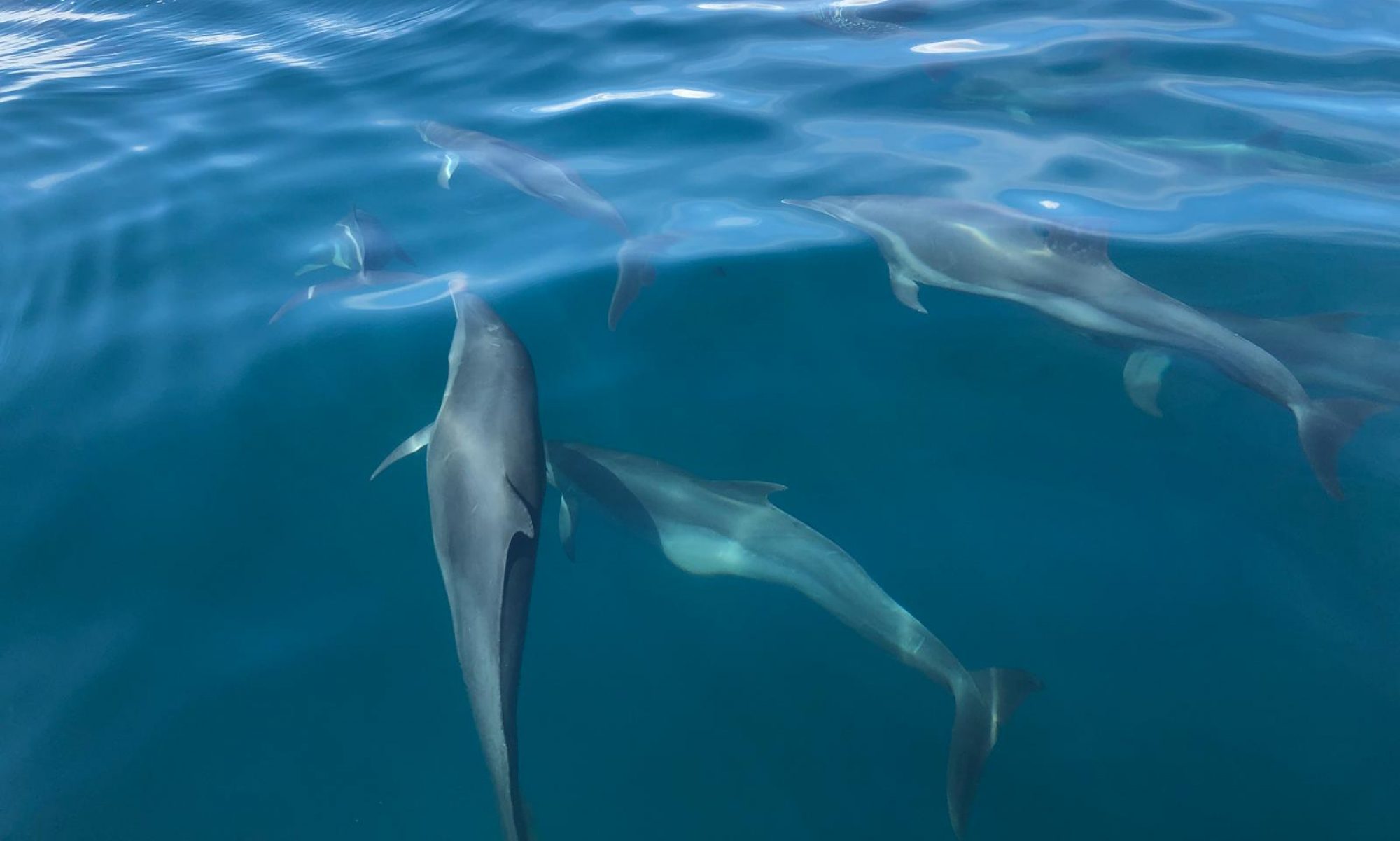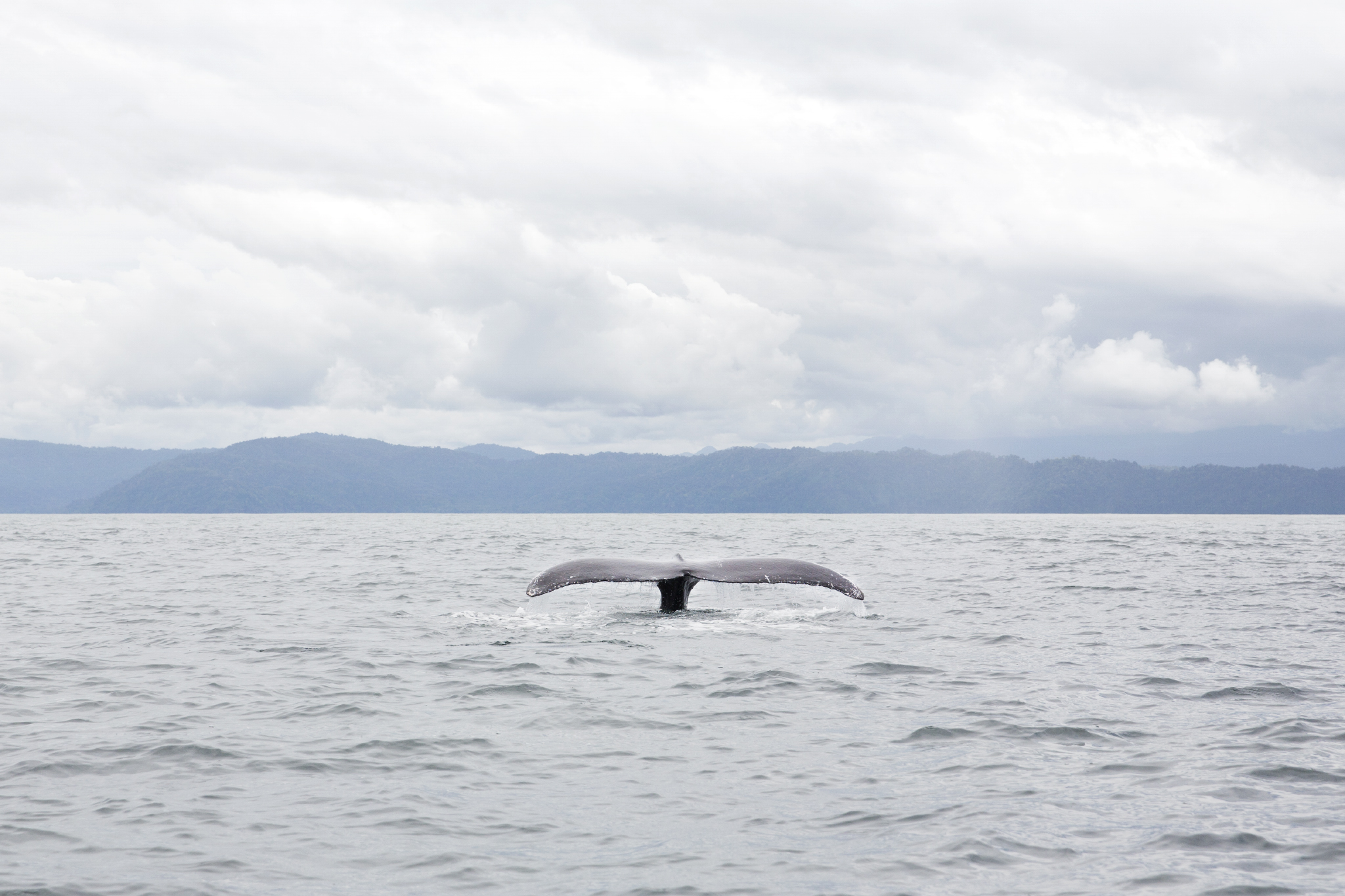Humpback Whales of the Osa Peninsula
The humpback whale migration is one of the most remarkable journeys by any creature on the planet – and it is made by one of the biggest creatures known to science. The humpback whales travel further than any other species of whale to reach their breeding grounds, more than 5,000 miles on one leg of the journey – the longest recorded journey by any individual mammal.
Although Ballena National Marine Park, just south of Dominical, is named after the humpback whales (Megaptera novaeangliae) that migrate there every year, it’s best to take a day trip to Drake Bay, Cano Island and Golfo Dulce where whales are sighted just about every day during their peak season.
Whales and dolphins are commonly seen in the Drake Bay and Golfo Dulce areas, where the calm, protected waters provide the perfect breeding and birthing grounds for these magnificent creatures. Drake Bay and Golfo Dulce are also home to the longest humpback whale season in the world as whales from both North and South America come here to breed and give birth.
You’d be hard pressed to find a better place for respectful animal watching than the tiny coastal village of Puerto Jimenez on the Osa Peninsula. Here, locals have learned the value of the biodiversity that surrounds them thanks largely in part to the great number of Eco tourists that visit the region every year. Conscientious boat operator Changing Tide Tours know to keep their distance when they spot a whale, and reprimand anyone that doesn’t. Because this town is isolated and small, everyone knows one another – making it relatively easy to keep people in check in terms of safeguarding the area’s precious natural environment.
Of the roughly 25 species of whales and dolphins that migrate through Costa Rica, humpback whales are by far the most abundant – and they the most marked migration patterns. They journey just off the Pacific coast during two seasons: the first migration comes from the north, mostly from California, from December to March and sometimes April. The second comes from the south, from July to November. Humpbacks like to feed on fish and krill in the freezing polar waters, and then either mate or give birth and begin to raise their young in the warm tropical waters. Because babies are born without a lot of fat on their bodies, warm temperatures are imperative, or else they might freeze.
Interestingly enough, we don’t know if the humpbacks continue on along the coast after visiting Costa Rica, or if they head straight to Antarctica. Other species also pass though Costa Rica waters en route to mate or feed, but their sporadic habits are not nearly as predictable. Other varieties include Brydes whales, fin whales, sei whales and many “whales” that are really a part of the dolphin family – like killer whales, false killer whales, and pilot whales.
The peak months are August through the end of November, when it is almost guaranteed to see whales in the Drake Bay, Caño Island, Golfo Dulce and Corcovado area. They are also commonly spotted in March – June.



